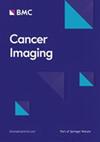MRI evaluation of vesical imaging reporting and data system for bladder cancer after neoadjuvant chemotherapy
IF 3.5
2区 医学
Q2 ONCOLOGY
引用次数: 0
Abstract
The Vesical Imaging-Reporting and Data System (VI-RADS) has demonstrated effectiveness in predicting muscle invasion in bladder cancer before treatment. The urgent need currently is to evaluate the muscle invasion status after neoadjuvant chemotherapy (NAC) for bladder cancer. This study aims to ascertain the accuracy of VI-RADS in detecting muscle invasion post-NAC treatment and assess its diagnostic performance across readers with varying experience levels. In this retrospective study, patients with muscle-invasive bladder cancer who underwent magnetic resonance imaging (MRI) after NAC from September 2015 to September 2018 were included. VI-RADS scores were independently assessed by five radiologists, consisting of three experienced in bladder MRI and two inexperienced radiologists. Comparison of VI-RADS scores was made with postoperative histopathological diagnosis. Receiver operating characteristic curve analysis (ROC) was used for evaluating diagnostic performance, calculating sensitivity, specificity, and area under ROC (AUC)). Interobserver agreement was assessed using the weighted kappa statistic. The final analysis included 46 patients (mean age: 61 years ± 9 [standard deviation]; age range: 39–70 years; 42 men). The pooled AUC for predicting muscle invasion was 0.945 (95% confidence interval (CI): 0.893–0.977) for experienced readers, and 0.910 (95% CI: 0.831–0.959) for inexperienced readers, and 0.932 (95% CI: 0.892–0.961) for all readers. At an optimal cut-off value ≥ 4, pooled sensitivity and specificity were 74.1% (range: 66.0–80.9%) and 94.1% (range: 88.6–97.7%) for experienced readers, and 63.9% (range: 59.6–68.1%) and 86.4% (range: 84.1–88.6%) for inexperienced readers. Interobserver agreement ranged from substantial to excellent between all readers (k = 0.79–0.92). VI-RADS accurately assesses muscle invasion in bladder cancer patients after NAC and exhibits good diagnostic performance across readers with different experience levels.新辅助化疗后膀胱癌膀胱成像报告和数据系统的磁共振成像评估
膀胱造影报告和数据系统(VI-RADS)已证明能在治疗前有效预测膀胱癌的肌肉侵犯情况。目前的当务之急是评估膀胱癌新辅助化疗(NAC)后的肌肉侵犯状况。本研究旨在确定VI-RADS检测NAC治疗后肌肉侵犯的准确性,并评估其在不同经验水平的读者中的诊断性能。在这项回顾性研究中,纳入了2015年9月至2018年9月期间在NAC治疗后接受磁共振成像(MRI)检查的肌层浸润性膀胱癌患者。VI-RADS评分由五名放射科医生独立评估,其中包括三名在膀胱磁共振成像方面经验丰富的放射科医生和两名经验不足的放射科医生。将 VI-RADS 评分与术后组织病理学诊断进行比较。采用接收者操作特征曲线分析法(ROC)评估诊断性能,计算灵敏度、特异性和 ROC 下面积(AUC))。使用加权卡帕统计量评估观察者之间的一致性。最终分析包括 46 名患者(平均年龄:61 岁 ± 9 [标准差];年龄范围:39-70 岁;42 名男性)。经验丰富的读者预测肌肉侵犯的集合 AUC 为 0.945(95% 置信区间 (CI):0.893-0.977),经验不足的读者为 0.910(95% CI:0.831-0.959),所有读者均为 0.932(95% CI:0.892-0.961)。最佳截断值≥4时,经验丰富的读者的集合敏感性和特异性分别为74.1%(范围:66.0-80.9%)和94.1%(范围:88.6-97.7%),经验不足的读者的集合敏感性和特异性分别为63.9%(范围:59.6-68.1%)和86.4%(范围:84.1-88.6%)。所有读者之间的观察者间一致性从相当好到极好不等(k = 0.79-0.92)。VI-RADS能准确评估NAC后膀胱癌患者的肌肉侵犯情况,并在不同经验水平的读者之间表现出良好的诊断性能。
本文章由计算机程序翻译,如有差异,请以英文原文为准。
求助全文
约1分钟内获得全文
求助全文
来源期刊

Cancer Imaging
ONCOLOGY-RADIOLOGY, NUCLEAR MEDICINE & MEDICAL IMAGING
CiteScore
7.00
自引率
0.00%
发文量
66
审稿时长
>12 weeks
期刊介绍:
Cancer Imaging is an open access, peer-reviewed journal publishing original articles, reviews and editorials written by expert international radiologists working in oncology.
The journal encompasses CT, MR, PET, ultrasound, radionuclide and multimodal imaging in all kinds of malignant tumours, plus new developments, techniques and innovations. Topics of interest include:
Breast Imaging
Chest
Complications of treatment
Ear, Nose & Throat
Gastrointestinal
Hepatobiliary & Pancreatic
Imaging biomarkers
Interventional
Lymphoma
Measurement of tumour response
Molecular functional imaging
Musculoskeletal
Neuro oncology
Nuclear Medicine
Paediatric.
 求助内容:
求助内容: 应助结果提醒方式:
应助结果提醒方式:


